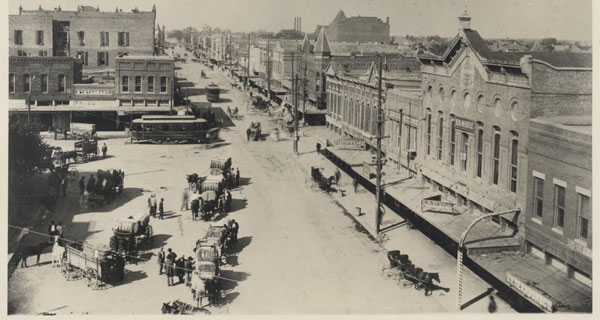The ad in the Cooper Review in September 1918 read, “Wanted: good young buggy horse for use this season. Must be free goer and safe to hitch any place.”
The year 1918 was one of confusion, war in Europe, limited flour, sugar, and other baking goods, and the type of transportation best for the muddy black clay soil of northeast Texas. For the average citizens in north Texas, the first two were way out of her reach, but not the last. Automobiles were sold and driven throughout the United States. But not everyone was convinced of their worth.
Every so often that summer some young man would offer his spiffy new car for sale since he was about to sail to war in France. Others put theirs on blocks in the barns.
More prosperous town dwellers purchased larger cars for the family. Sunday afternoon drives were extremely popular. But was everyone in northeast Texas smitten with the automobile?
Evidently the newspaper reporter looking for a good, reliable buggy horse felt an equine suited his needs quite well. After all, he would be traveling through the county and to county seats as far away as Sulphur Springs, Clarksville and Greenville. As soon as the rains set in, those black dirt roads would not be navigable in an automobile.
A free-goer indicates the new owner would often let the horse follow the road while he worked on an article he was writing. A horse that could be hitched at any place would not try to nick another horse on the rail or at a tree. It would be a gentle animal. After reading this I wondered if the owner would rather have a ground tied horse that didn’t need a place to tie the reins.
Ground tied horses were trained very early when a cowboy was taming the horse. It learned to stand still when the rider dropped the reins straight down on the ground and walked away. No need to tie the reins to something else. Ground tied horses were used primarily in ranching counties, where if the rider was thrown off or there was no place to tie up the horse, the rider would not be left afoot for several miles when the horse decided to go back to the barn. (Could any self-respected cowboy walk several miles?)
The issue of automobiles versus equines was not resolved until the early years of World War II, some twenty plus years later. I have heard old-timers talk about buggies and wagons around courthouses up until 1940.
John W. (Dub) Duncan of Wolfe City told me when he was young the family went to town in a wagon. There were places to tie horses and mules in the alley or even to the wagon. His dad always took a bale of hay for the kids to sit on and for the horses to eat during the day. There was a water vat in the alley where horses or mules could drink during the day.
Dale Gaskill remembered lots of old home places had big circular driveways for wagons and buggies. My great-grandparents had a big open area at the end of the road leading up to their house. That was where wagons turned around; but I doubt that very many buggies travelled that path. I asked my father one time if he was embarrassed when his grandparents came to town in their wagon. He said no, because that was the norm.
Horses and mules were familiar, less expensive, and perfectly suited to those whose travels were not far away. That’s just one more way World War II changed our lives. I certainly would hate to ride fifteen or twenty miles, sitting on a bale of hay, with the temperature in the 90s or above.

